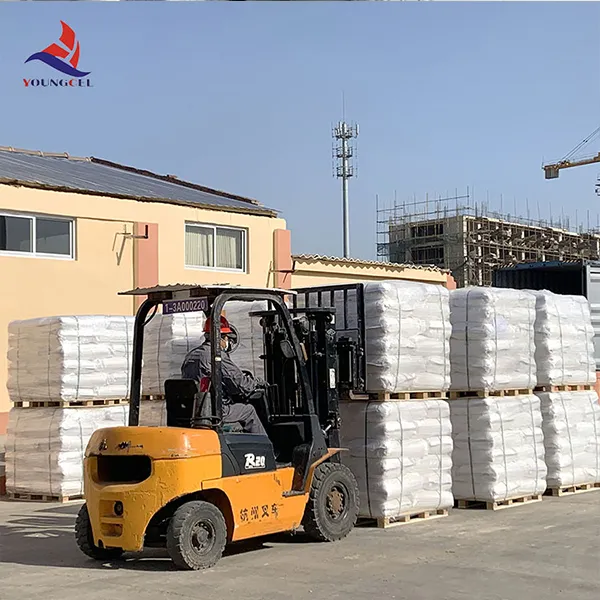The Role of Hydroxypropyl Methylcellulose (HPMC) in Chemical Adhesives
Hydroxypropyl methylcellulose (HPMC) is a versatile polymer widely used in various applications, particularly in the formulation of chemical adhesives. Its unique properties make it an essential ingredient in adhesive formulations, providing enhanced performance and versatility. This article explores the characteristics, benefits, and applications of HPMC in the adhesive industry, highlighting its significance in modern formulations.
Characteristics of HPMC
HPMC is a semi-synthetic polymer derived from cellulose, a natural polymer found in plant cell walls. The modification of cellulose through the introduction of hydroxypropyl and methyl groups enhances its solubility and functional properties. HPMC is available in various grades, each with distinct viscosities and degrees of substitution, enabling formulators to tailor its use according to specific requirements.
One of the critical characteristics of HPMC is its ability to dissolve in water, forming a transparent, viscous solution. This property is crucial in adhesive formulations as it allows for easy application and ensures uniform distribution. Additionally, HPMC exhibits thermoplastic behavior, meaning it can soften upon heating and regain its structural integrity upon cooling. This feature facilitates convenient processing and application in various adhesive systems.
Benefits of HPMC in Adhesives
1. Improved Adhesion HPMC enhances the adhesion properties of adhesives by providing a better bond to substrates. Its hydrophilic nature allows it to penetrate and interact with both porous and non-porous surfaces, thereby increasing the overall adhesive strength.
2. Thickening Agent The viscosity-increasing properties of HPMC make it an excellent thickener. In adhesive formulations, it helps to achieve the desired consistency, preventing the adhesive from dripping or running during application.
3. Water Retention HPMC effectively retains water, which is essential in maintaining moisture levels during the curing process. This feature is particularly beneficial in applications such as tile adhesives and wall compounds, where prolonged working time is necessary.
4. Non-Toxic and Environmentally Friendly As a cellulose derivative, HPMC is non-toxic and environmentally friendly, making it suitable for various applications, including those in the construction and food industries.
chemic adhes hpmc

5. Compatibility HPMC is compatible with a wide range of other ingredients commonly used in adhesive formulations, such as resins, fillers, and pigments. This compatibility allows formulators to create customized adhesive products without compromising performance.
Applications of HPMC in Chemical Adhesives
HPMC is utilized in various adhesive formulations, including but not limited to
- Construction Adhesives In the construction industry, HPMC is commonly found in tile adhesives, joint compounds, and mortar formulations. Its water retention and thickening properties help provide excellent bonding strength and workability.
- Wood Adhesives In woodworking, HPMC is often incorporated into adhesive formulations to improve bond strength and flexibility, making it suitable for furniture and cabinetry.
- Packaging Adhesives The food packaging industry benefits from HPMC's non-toxic properties and its ability to form strong bonds, ensuring food safety while maintaining adhesive performance.
- General Purpose Adhesives HPMC is also used in various general-purpose adhesives for household and industrial applications, providing versatility and reliability.
Conclusion
In summary, hydroxypropyl methylcellulose (HPMC) plays a crucial role in the development of chemical adhesives. Its unique characteristics, such as water solubility, thickening ability, and excellent adhesion properties, make it an indispensable ingredient in modern adhesive formulations. As the demand for high-performance, environmentally friendly adhesives continues to rise, HPMC is poised to remain a vital component in the industry, aiding in the formulation of innovative adhesive solutions across various sectors. The future of adhesives will undoubtedly be influenced by the continued use and development of HPMC, paving the way for new possibilities in bonding applications.
-
Rdp Powder: Key Considerations for Wholesalers in the Building Materials IndustryNewsJul.08,2025
-
Key Considerations for Wholesalers: Navigating the World of Hpmc - Based ProductsNewsJul.08,2025
-
Hpmc Detergent: Key Considerations for WholesalersNewsJul.08,2025
-
Key Considerations for Wholesalers: China Hpmc For Tile Adhesive, Coating Additives, Concrete Additives, and MoreNewsJul.08,2025
-
Crucial Considerations for Wholesalers: Navigating the World of Construction MaterialsNewsJul.08,2025
-
Key Considerations for Wholesalers Sourcing Additive For Cement, Additive For Concrete, Additive For Putty from Additive Manufacturer Shijiazhuang Gaocheng District Yongfeng Cellulose Co., Ltd.NewsJul.08,2025




